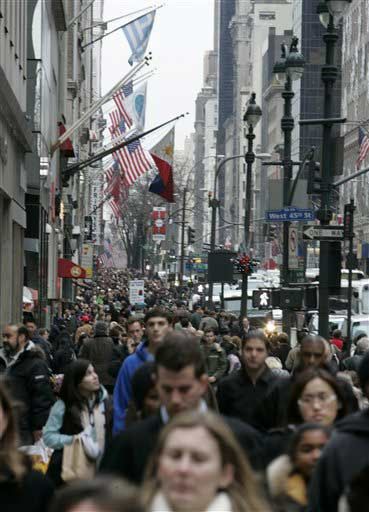Why We Can't Find a Face in the Crowd

Spotting a friend in a crowd can be nerve-wracking. New research suggests your brain processes this sea of faces as a collection of blurred lines and edges. The result: an indecipherable jumble.
The phenomenon is called crowding and occurs when a person fails to recognize an individual object in a cluttered environment. The seeming malfunction could be due to one of the shortcuts our brains use to help us make sense of the vast amount of visual information we take in every second.
While scientists have documented crowding for simple objects, many had assumed this breakdown in recognition would not hold for human faces.
"Crowding may reveal one of the fundamental mechanisms the visual system uses to consolidate or filter a great deal of information into a very few meaningful chunks," said David Whitney, a psychologist at the Center for Mind and Brain at the University of California, Davis.
Whitney and his colleagues conducted five experiments to measure participants' recognition of a familiar face or house located in a crowded display of other faces or houses. Images would flash onto a computer screen and subjects had to indicate whether the target face, for instance, was on the right, on the left or not present at all.
The participants had the most trouble identifying target faces surrounded by upright faces, as would be seen in crowds. When viewing images of houses or upside-down faces, participants had no difficulty recognizing the target object.
Translating the computer-screen observations to real life, the researchers suggest that images of upright faces interfere with each other, partially explaining why it's so tricky to pick out a face in a crowd.
Sign up for the Live Science daily newsletter now
Get the world’s most fascinating discoveries delivered straight to your inbox.
The results, detailed in a recent issue of the Journal of Vision, may have implications for individuals with face-recognition disorders and ailments related to visual attention, the researchers suggest. In the long-term, the results could help scientists develop an artificial visual system that rivals that of humans.
"If vision scientists and engineers are to develop an efficient and realistic artificial visual system, they will almost certainly benefit from using the human visual system as a model," Whitney said.
- Top 10 Unexplained Phenomena
- Body Quiz: What the Parts Do
- How the Human Eye Works












